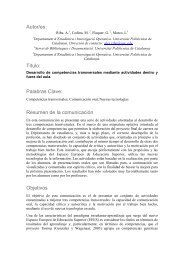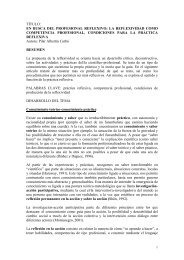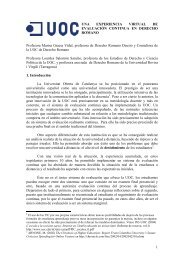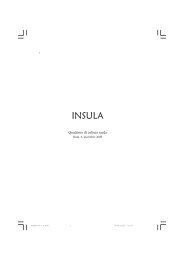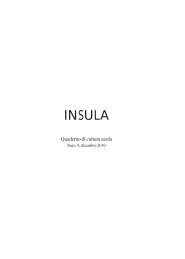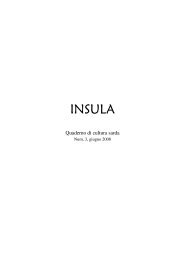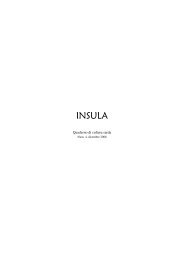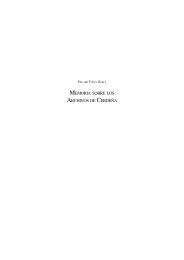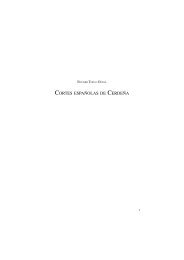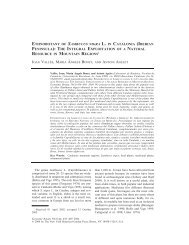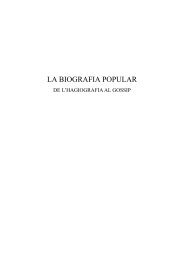Impaginato 5.p65 - Universitat Rovira i Virgili
Impaginato 5.p65 - Universitat Rovira i Virgili
Impaginato 5.p65 - Universitat Rovira i Virgili
You also want an ePaper? Increase the reach of your titles
YUMPU automatically turns print PDFs into web optimized ePapers that Google loves.
126<br />
Roslyn M. Frank<br />
As Satrústegui points out, in some cases these prayers and folk sayings<br />
insert the term inguma when addressing the being in question, while in other<br />
cases the same prayer or folk saying employs the term marrau or mamua.<br />
Thus, we can see that these three terms (marrau, mamua and inguma) are<br />
synonyms: phonological variants of each other. This line of evidence would<br />
also suggest that two sets of phonological variants of the term hamalau might<br />
have branched off from the original etymon of hamalau and then distanced<br />
themselves from each other: one set situated in more eastern dialects and<br />
another in more western ones. 29<br />
At the same time we can see that once Christianity arrived, people came up<br />
with discursive ways to dissuade the frightening «night visitor» from paying<br />
them an unwanted visit. Thus, these formulaic sayings and prayers represent<br />
another example of the kind of hybridization that took place when the two belief<br />
systems came into direct contact with each other. One only wonders what this<br />
night-time prayer would have sounded like before the arrival of Christianity:<br />
were children instructed to talk to Hamalau before going to sleep, in order to tell<br />
the creature to keep busy with other things, like counting the stars, rather than<br />
paying them a visit? And, in the case of adults, were they, too, accustomed to<br />
addressing this being each night before falling asleep? As Satrústegui has<br />
observed, it is noteworthy that the prayers are not directed to God, Jesus Christ<br />
or the Virgin Mary, seeking their intervention, but rather the discourse scenario<br />
has the individual speaking directly to Hamalau, albeit under the variant names<br />
of Marrau, Mamu, Mahumahu, Mahuma, Inguma, etc.<br />
Also, according reports by Donostia based on the fieldwork he carried out in<br />
the same region, his adult informants said that the creature was an animal: «Como<br />
una especie de animal sedoso que oprime al durmiente» [‘Like a kind of silky<br />
animal that presses down on the sleeper’], while the general opinion of the<br />
informants was the «el Ingume es una especie de animal, suave, de mucho peso,<br />
que se desliza por el pecho apretándolos» [‘the Ingume is a kind of animal,<br />
smooth, very heavy, that slides onto their chest, gripping them tightly’] (cited in<br />
Satrústegui 1987: 22).<br />
Another clue concerning the nature of the creature comes from the verbal<br />
syntax encountered in the prayers and sayings. In Euskara there is a type of<br />
dialogic addressivity associated with certain verb forms which requires the<br />
speaker to mark the gender of the person being spoken to, i.e., the presence of<br />
29 For a much more detailed ethnographic discussion of the western variants cf. Satrústegui (1981a;<br />
1981b: 365-375).




